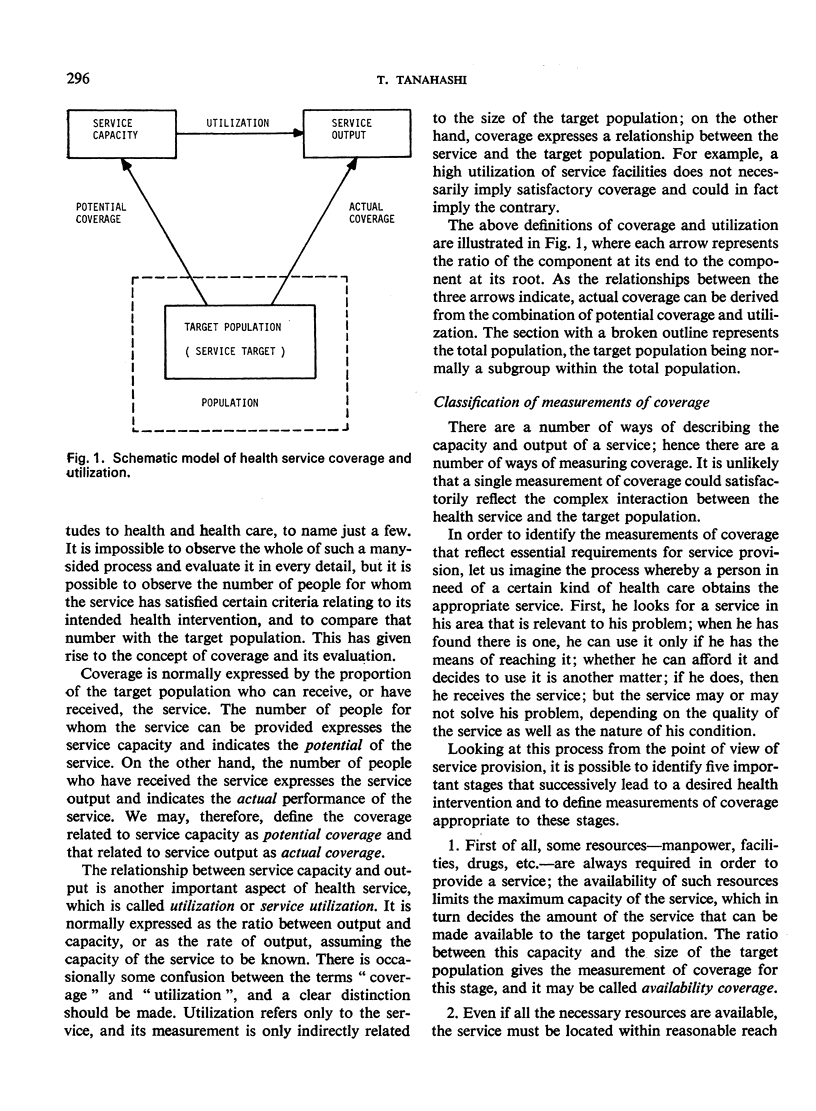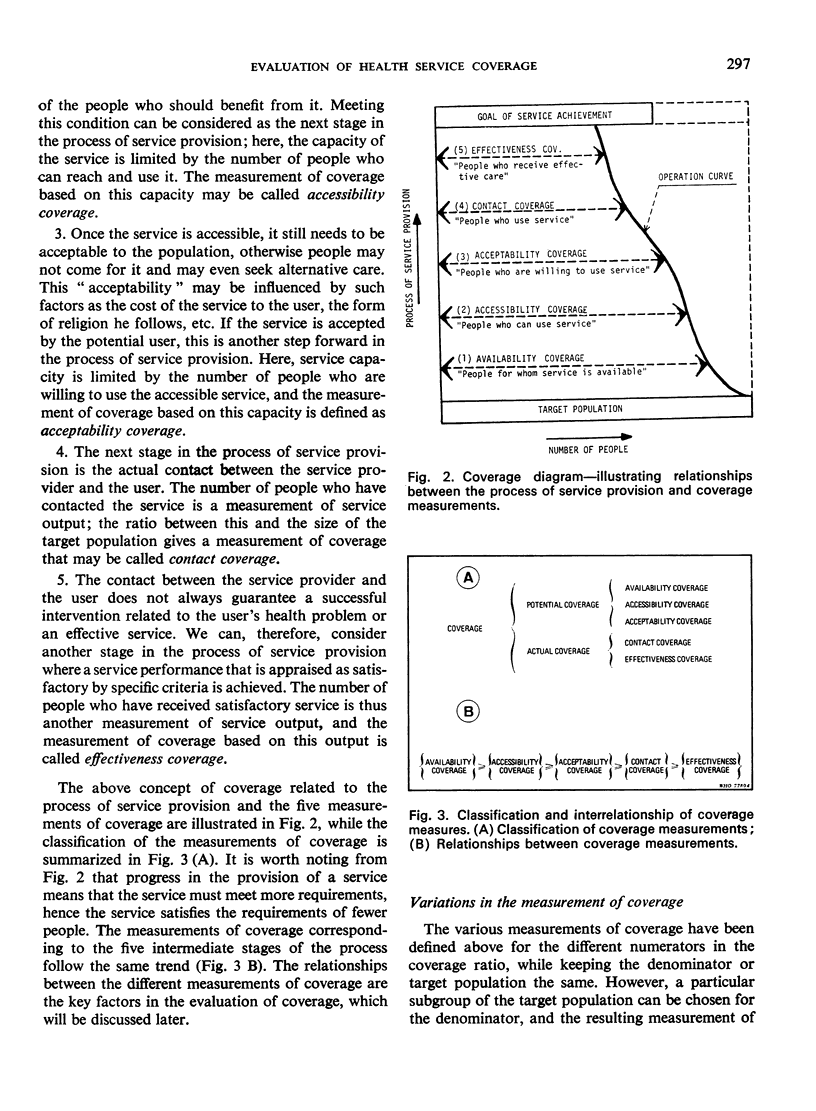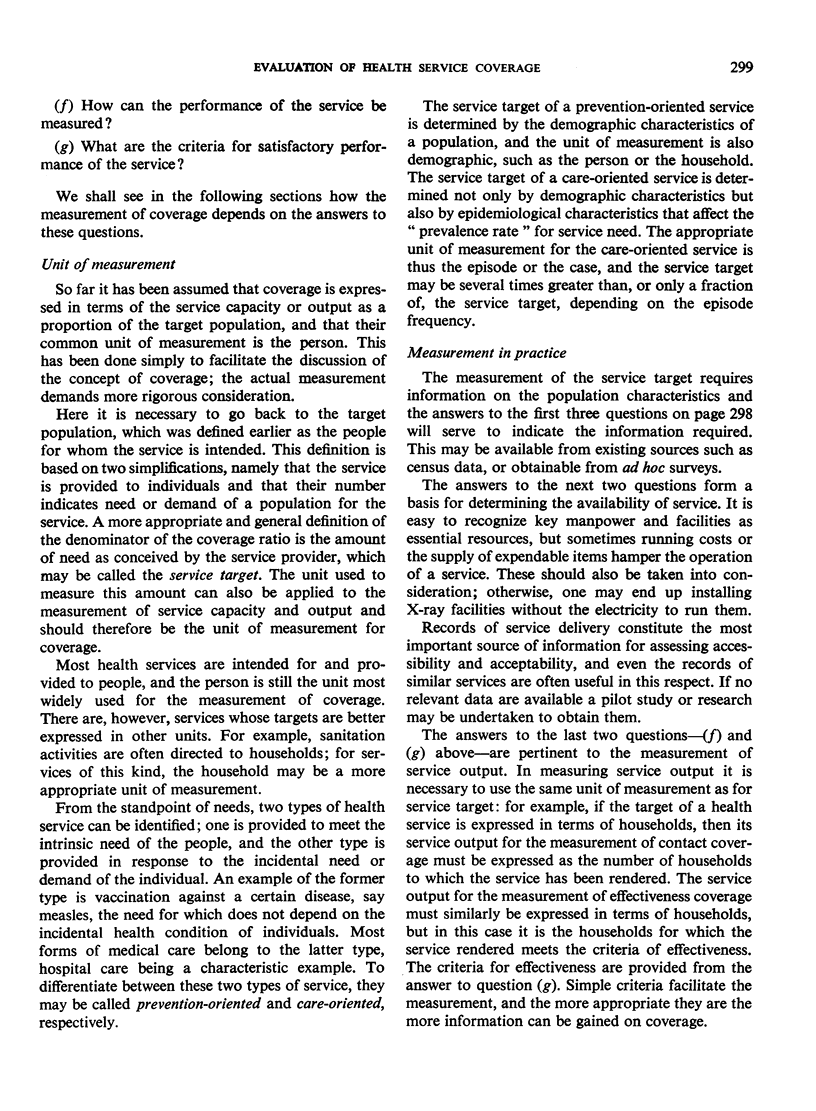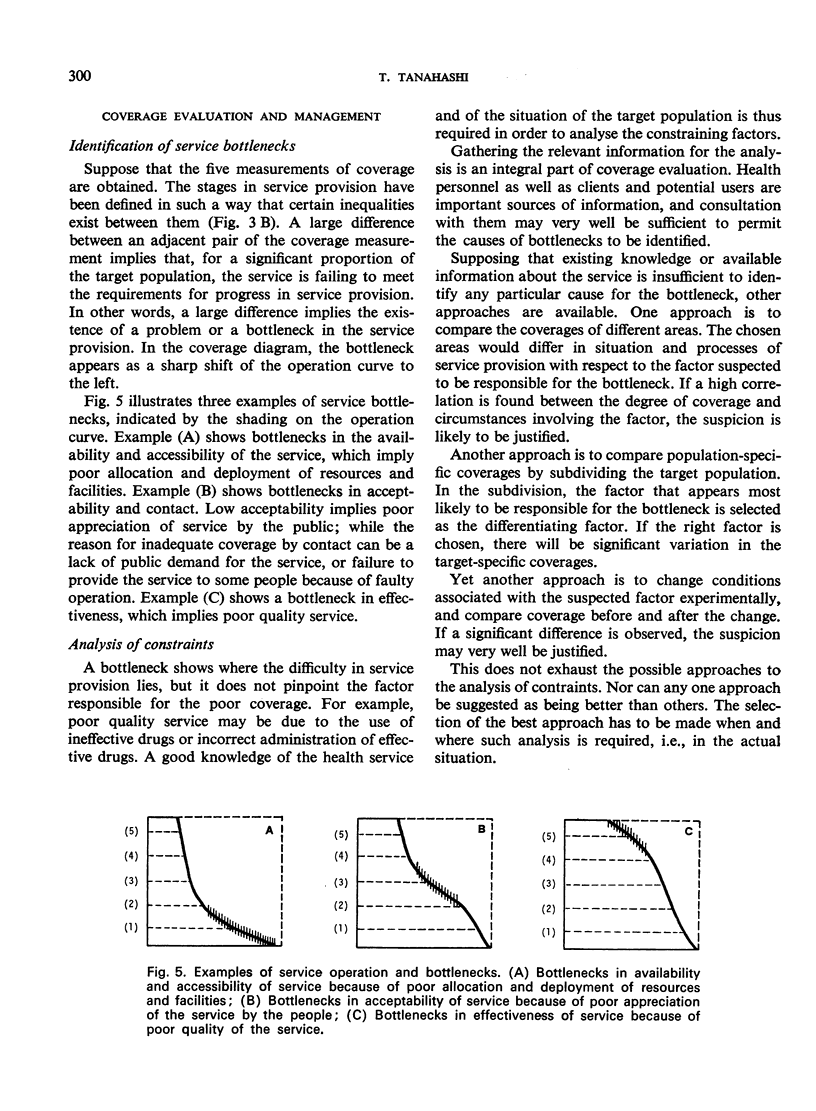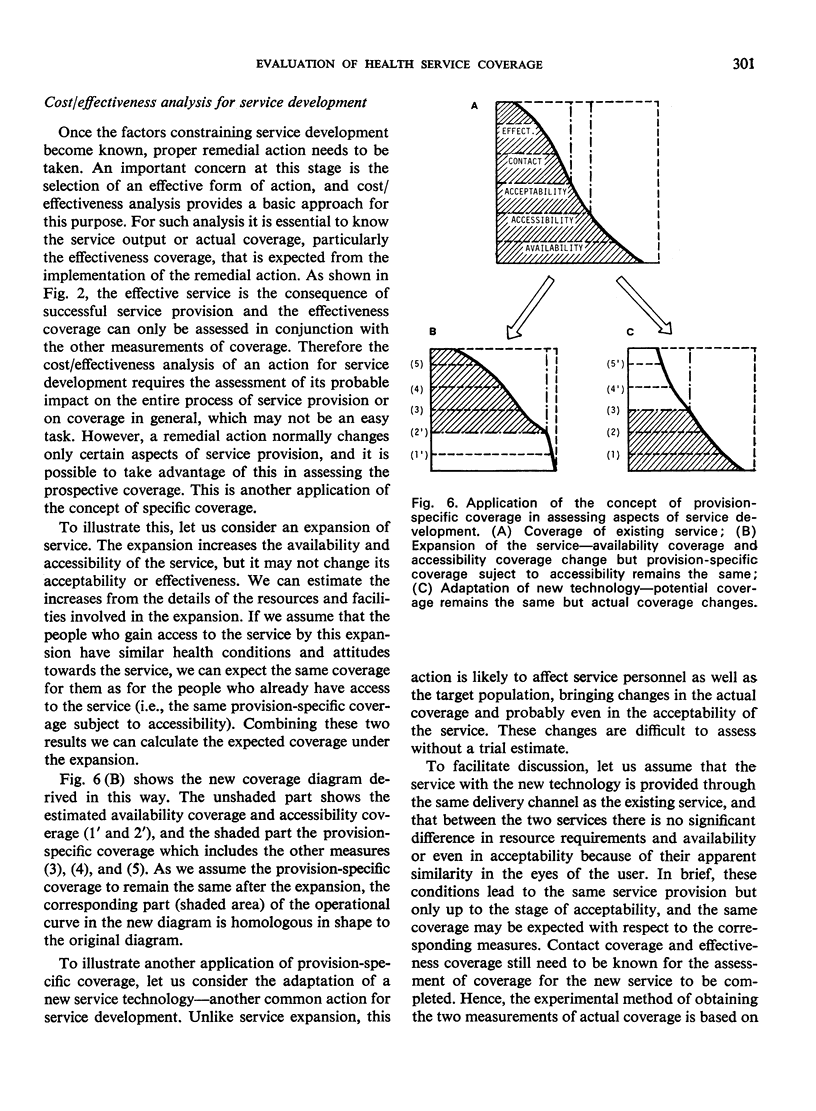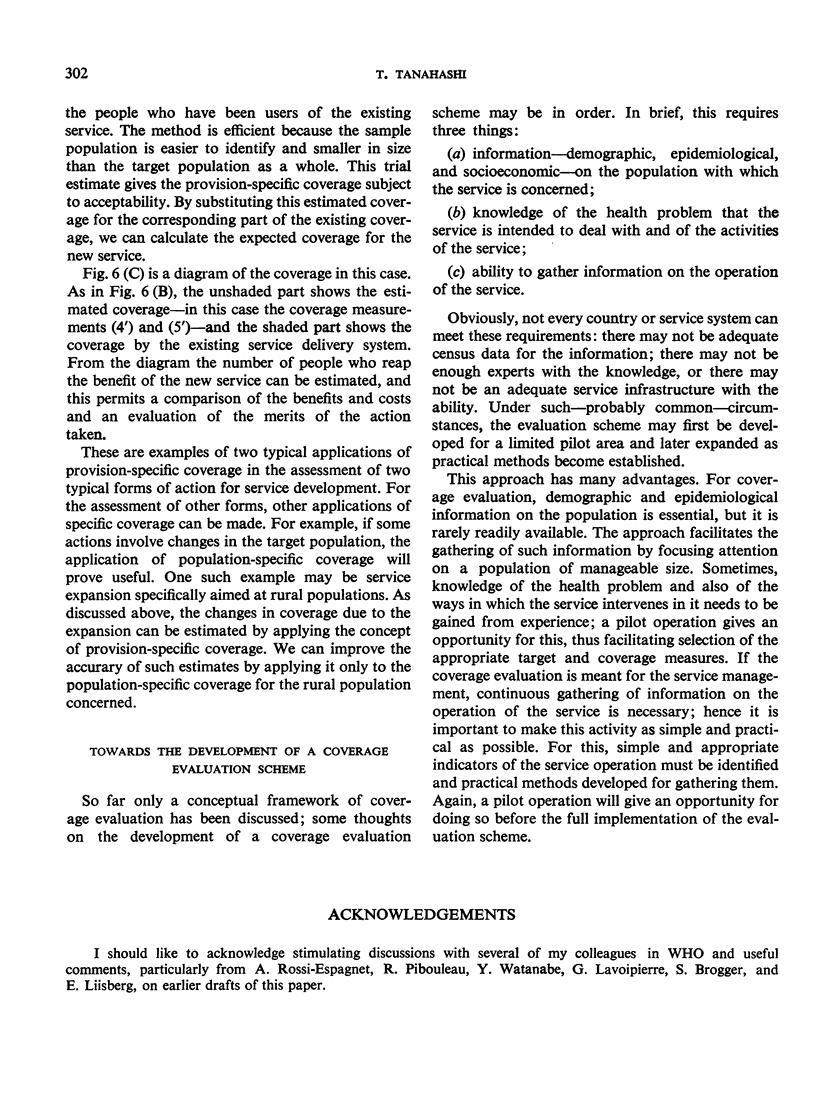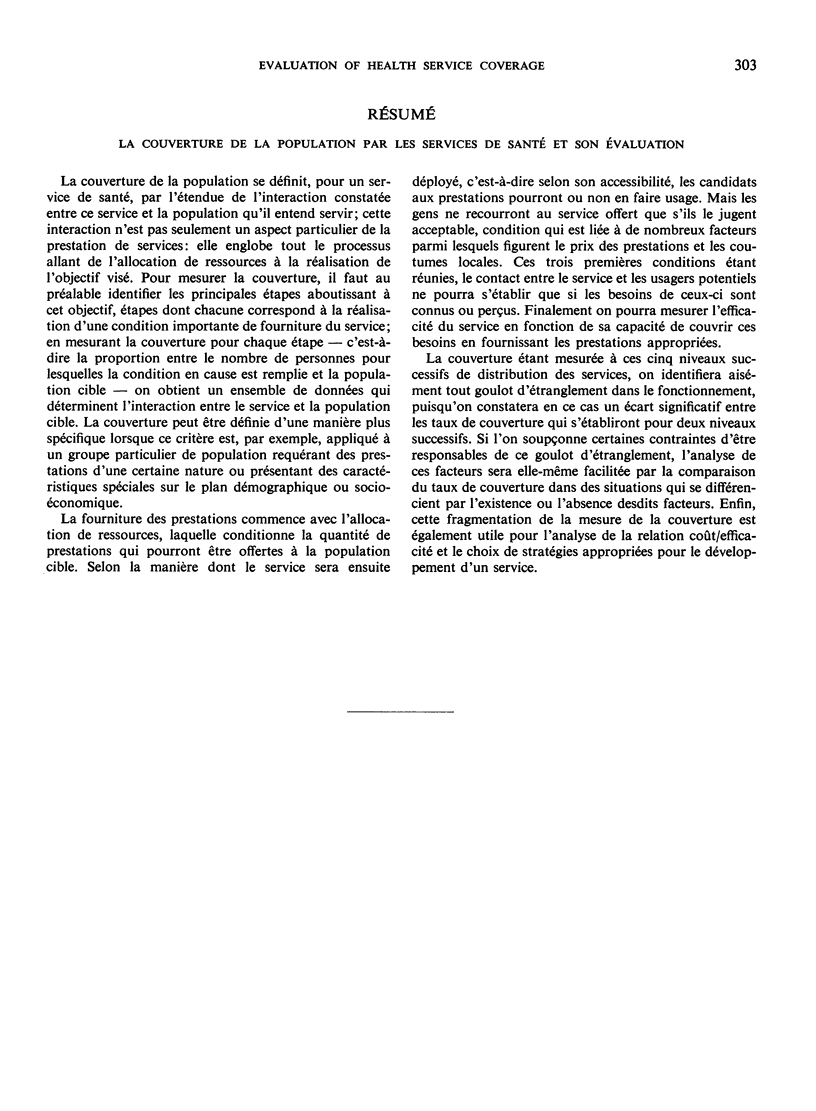Abstract
Health service coverage is considered as a concept expressing the extent of interaction between the service and the people for whom it is intended, this interaction not being limited to a particular aspect of service provision but ranging over the whole process from resource allocation to achievement of the desired objective. For the measurement of coverage, several key stages are first identified, each of them involving the realization of an important condition for providing the service; a coverage measure is then defined for each stage, namely the ratio between the number of people for whom the condition is met and the target population, so that a set of these measures represents the interaction between the service and the target population. This definition of coverage allows for variations, which are called ”specific coverage”, by limiting the target population to specific subgroups differentiated by certain conditions related to service provision or by demographic or socioeconomic factors.
The evaluation of coverage on the basis of these concepts enables management to identify bottlenecks in the operation of the service, to analyse the constraining factors responsible for such bottlenecks, and to select effective measures for service development.
Full text
PDF
